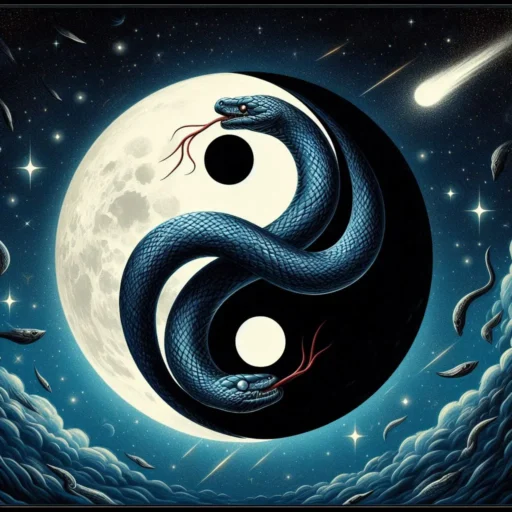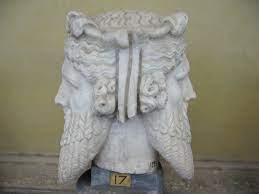Ever wondered why certain symbols pop up repeatedly in spiritual discussions?
Duality Symbols play a significant role in spirituality, representing the interconnected and balanced nature of opposing forces or energies.
These symbols often convey the idea that opposites are complementary and necessary for harmony and equilibrium in the spiritual world.
We will explore the important symbols used to explain the duality in nature. Lets start!
What Does Duality Mean?
In spirituality, duality refers to the recognition and understanding of opposing forces or energies coexisting in harmony.
It’s like acknowledging that day and night, good and bad, or joy and sorrow are interconnected aspects of life. This concept emphasizes that one cannot exist without the other, creating a balanced and cyclical nature to existence.
Duality encourages spiritual seekers to find harmony in embracing both sides, recognizing that the interplay of opposites is essential for personal growth and enlightenment.
In essence, duality in spirituality is about appreciating the contrasting forces, understanding their interconnectedness, and finding a sense of equilibrium in the journey of self-discovery.
Symbols of Duality & Dualism
1. Yin and Yang
Yin and Yang, a fundamental concept in Eastern spirituality, embodies the essence of duality. Representing opposites such as darkness and light, femininity and masculinity, Yin and Yang illustrate the interconnected and complementary nature of contrasting forces.
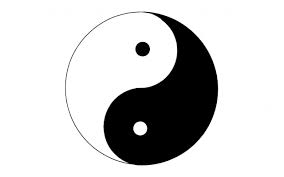
This symbol emphasizes that harmony arises not from the dominance of one force over the other, but from their balanced coexistence.
It’s a visual reminder that within darkness, there is a seed of light, and within light, a trace of darkness.
The dance of Yin and Yang reflects the dynamic equilibrium essential for spiritual well-being and understanding the inherent unity in duality.
2. Ouroboros
Ouroboros, an ancient symbol featuring a serpent or dragon consuming its own tail, is deeply intertwined with the concept of duality.
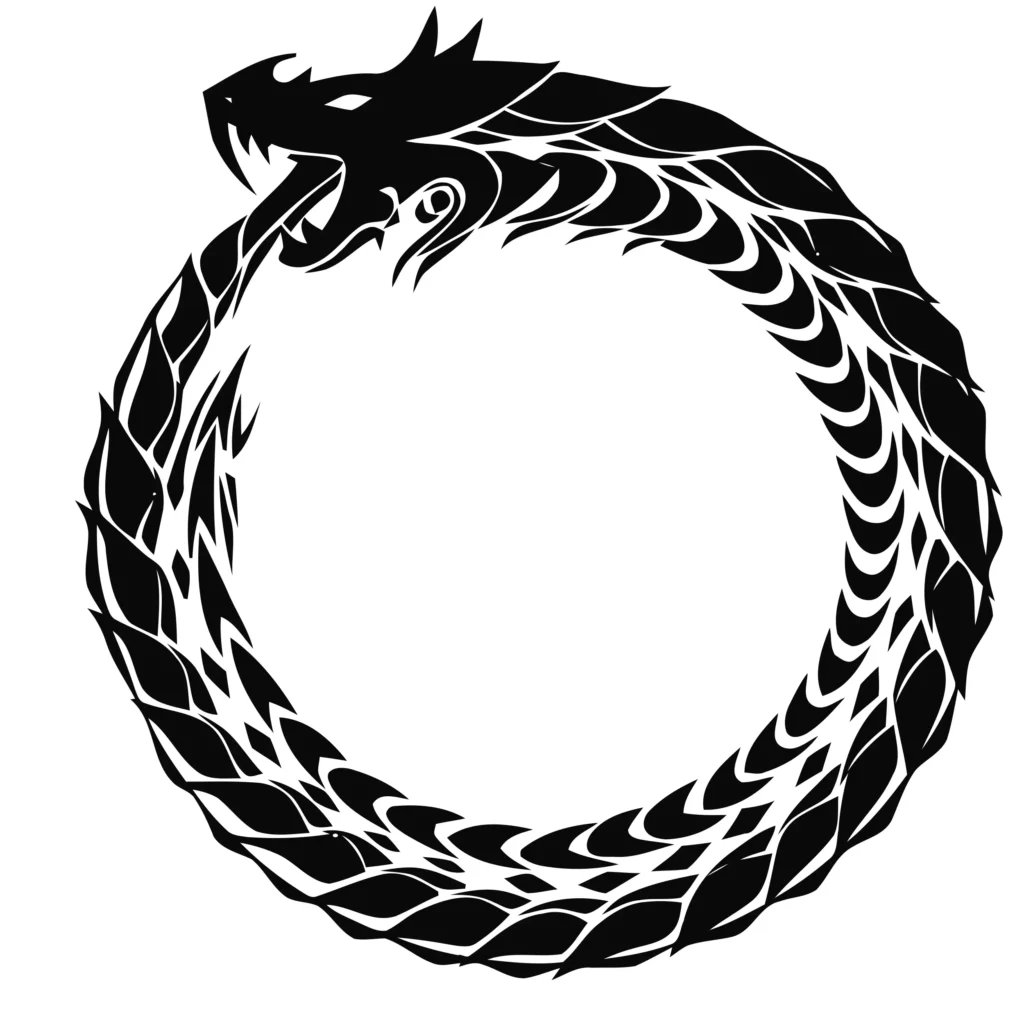
This emblematic image signifies the eternal cycle of life, death, and rebirth, encapsulating the interconnectedness of opposites.
As the serpent devours itself, it illustrates the perpetual flow between creation and destruction, where the end is a prelude to a new beginning.
Ouroboros encapsulates the paradoxical unity of opposites, showcasing that within the cycles of life and death, there exists a harmonious connection, highlighting the inseparable dance of duality in the cosmic order.
3. Balance Scales
The balance scales, often associated with justice, are powerful symbols of duality in spirituality. These scales depict the delicate equilibrium between opposing forces.
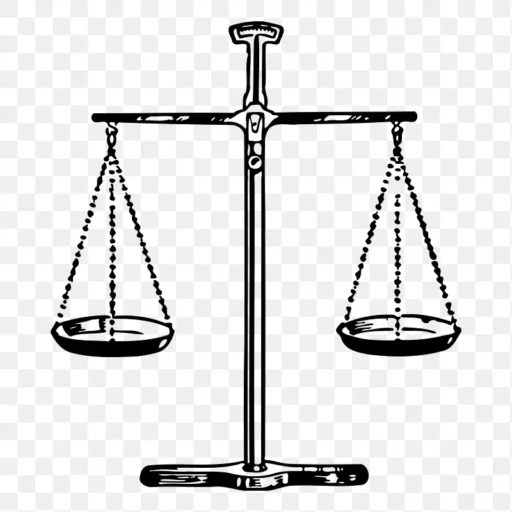
Whether it’s good and evil, light and darkness, or order and chaos, the scales signify the necessity of finding a balance point. They advocate for fair judgment and impartiality in navigating life’s dualities.
By weighing both sides with equality, the balance scales underscore the importance of embracing opposing forces without favoring one over the other, promoting a harmonious coexistence of contradictions in the pursuit of spiritual equilibrium.
4. Dual-Headed Animals
Dual-headed animals, like the double-headed eagle or Janus with two faces, serve as captivating symbols of duality in spirituality.
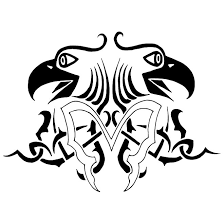
These creatures embody the idea of seeing both sides, encouraging a holistic understanding of opposing perspectives.
The double heads represent the ability to navigate the complexities of life with a comprehensive view, acknowledging that every situation has multiple facets.
In the spiritual journey, these symbols act as guides, prompting individuals to embrace diverse viewpoints for personal growth and wisdom, fostering a balanced and inclusive approach to the dualities inherent in existence.
5. Sun and Moon
The Sun and Moon, celestial entities intertwined with various spiritual traditions, symbolize profound duality.
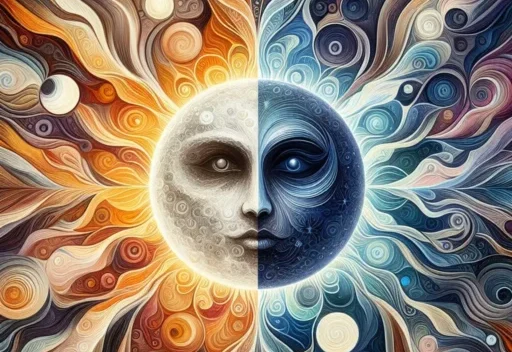
The Sun, radiating light and warmth, signifies the masculine and active energies, often associated with vitality and enlightenment.
In contrast, the Moon embodies the feminine and receptive energies, reflecting a softer, introspective side. Together, they form a cosmic dance, illustrating the harmonious coexistence of opposing forces.
This celestial interplay not only represents a play of light and shadow in the night sky but also serves as a remarkable example of the intricate balance embodied by duality symbols.
It mirrors the delicate equilibrium between the active and contemplative aspects of life, guiding spiritual seekers towards a holistic understanding of the universe through these celestial duality symbols.
6. Fire and Water
Fire and Water, elemental forces with profound symbolic significance, beautifully exemplify the concept of duality.
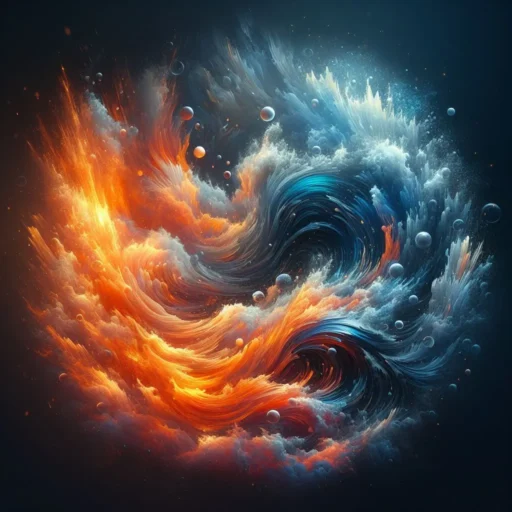
Fire, with its transformative and dynamic energy, represents passion, destruction, and the masculine aspect. On the other hand, Water, with its fluidity and nurturing qualities, symbolizes emotion, creation, and the feminine aspect.
Together, they form a harmonious dance of opposites, illustrating the intricate balance inherent in duality symbols.
This elemental interplay is not merely a clash of extremes; it embodies the universal equilibrium that underlines the essence of duality symbols in spiritual understanding.
In exploring the relationship between Fire and Water, we uncover the inherent unity within their contrasting forces, a fundamental aspect of duality symbols.
7. The Number 2
The Number 2 holds significant symbolism in representing duality, a fundamental concept echoed in various cultures and spiritual traditions.
Whether as the duality symbols found in Yin and Yang, day and night, or light and dark, the Number 2 encapsulates the harmonious interplay of opposing forces.
It signifies balance, unity, and the recognition that existence thrives on the complementary dance of contrasting energies.
The essence of duality symbols is vividly embodied in the simplicity and universality of the Number 2, serving as a numerical reminder of the interconnected and balanced nature inherent in spiritual teachings.
8. Double Fish
The Double Fish, a potent symbol in Eastern traditions, vividly embodies the concept of duality. This symbol typically consists of two fish swimming in a circle, their heads pointing in opposite directions.
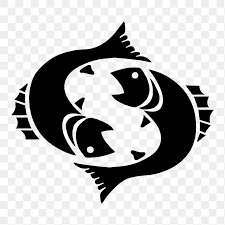
Representing balance, harmony, and the cyclical nature of life, the Double Fish symbolizes the interdependence of opposing forces.
This imagery not only echoes the yin-yang philosophy but also reinforces the broader significance of duality symbols in spiritual understanding.
The Double Fish serves as a visual reminder of the connection of contrasting energies, guiding individuals towards embracing the inherent unity within the dualities of existence.
9. The Ankh
The Ankh, an ancient Egyptian symbol, carries profound connections to the concept of duality.
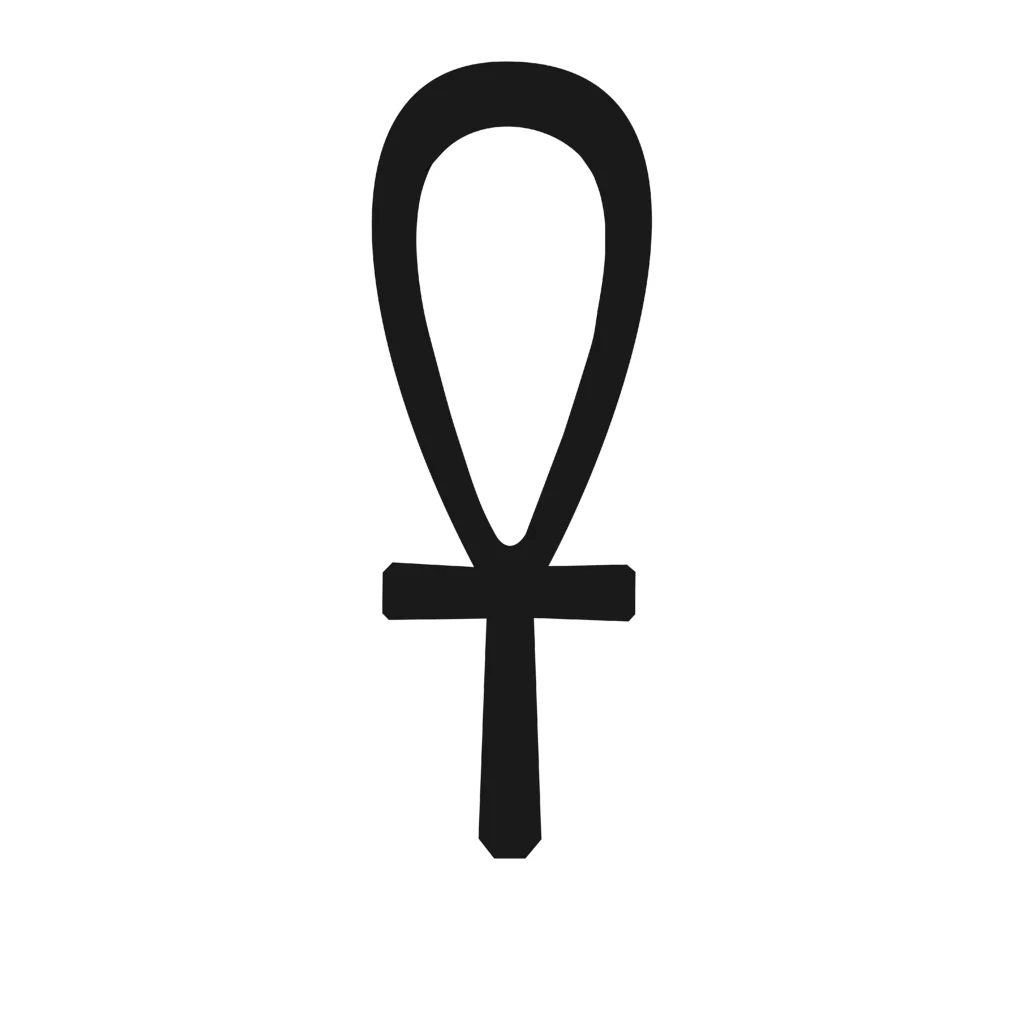
Shaped like a cross with a loop at the top, it symbolizes the union of opposites – the balance between life and death, the physical and spiritual.
The horizontal bar represents the earthly realm, while the vertical bar embodies the spiritual dimension.
Together, they form a harmonious whole, emphasizing the inseparable nature of contrasting forces.
The Ankh is a visual reminder that life and death are not isolated events but part of a continuous, interconnected cycle, encouraging a holistic understanding of existence within the tapestry of duality.
10. Taijitu
The Taijitu, a symbol originating from Chinese philosophy, vividly illustrates the essence of duality.
Consisting of two swirling shapes, one dark and one light, it portrays the perpetual interplay between opposites.
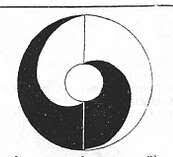
The dark and light elements, often associated with Yin and Yang, encapsulate the dynamic nature of existence.
The continuous movement within the Taijitu symbolizes the ever-changing balance between contrasting forces, encouraging an understanding that life’s harmony lies in the acceptance and integration of these dualities.
It serves as a visual guide, emphasizing the importance of embracing the ebb and flow of opposing energies for overall balance and spiritual well-being.
11. Lotus Flower
The lotus flower, revered in Eastern spirituality, beautifully embodies the concept of duality.
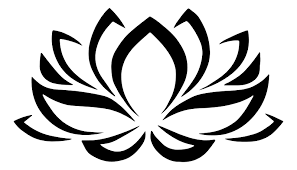
Growing in muddy waters and rising above the surface to bloom, it symbolizes the journey from darkness to light, ignorance to enlightenment.
The lotus teaches that even in challenging conditions, one can transcend and flourish. This duality of muddy waters and pristine bloom mirrors life’s struggles and spiritual ascent.
It emphasizes the coexistence of opposites, portraying resilience, transformation, and the inherent beauty that emerges from adversity.
The lotus becomes a poignant reminder that within the muck of challenges, the potential for spiritual growth and enlightenment exists.
12. The Buddha
The Buddha, an iconic spiritual figure, reflects profound connections with duality symbols in his teachings.
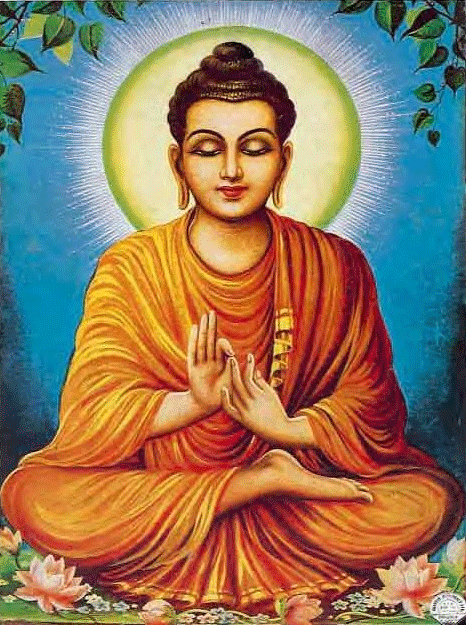
Central to Buddhism is the concept of the Middle Way, encouraging practitioners to navigate between extremes and find balance.
The duality symbols within the Buddha’s journey include the contrast between worldly desires and enlightenment, suffering and liberation.
The Buddha’s life story serves as a powerful narrative of transcending dualities, emphasizing the importance of balance and mindfulness on the path to spiritual awakening.
In contemplating the Buddha’s teachings, one discovers a roadmap for navigating the intricate dance of opposites that characterize the essence of duality symbols in spiritual understanding.
13. Magpie
The Magpie, often recognized as a duality symbol in various cultures, carries rich symbolic significance.
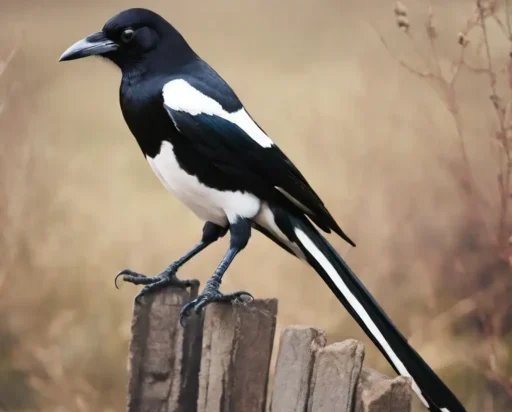
In Chinese folklore, the magpie is associated with the concept of yin and yang, embodying the harmonious interplay of opposites. The bird’s black and white plumage mirrors the dualistic nature of existence, illustrating the unity within diversity.
The magpie serves as a reminder of balance and the interconnectedness of light and dark forces.
By incorporating the Magpie into cultural narratives, societies embrace this feathered creature as a powerful representation of duality symbols, highlighting the beauty found in the integration of opposing energies.
14. Double Spiral
The Double Spiral stands as a compelling duality symbol, weaving its significance through diverse cultures and spiritual practices.
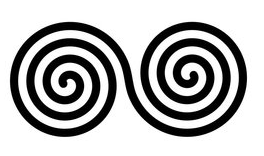
Representing the interwoven dance of opposites, this symbol embodies the cyclical nature of existence. With its dual spirals intertwining, it mirrors the harmonious relationship between contrasting forces.
The Double Spiral is a visual metaphor for the eternal dance of creation and destruction, emphasizing the intricate balance inherent in duality symbols.
By recognizing the unity within the dual aspects, the Double Spiral serves as a guide, inspiring individuals to navigate life’s complexities and embrace the interconnected tapestry of existence.
15. Vesica Piscis
The Vesica Piscis, a captivating geometric figure, is deeply connected with the concept of duality symbols.
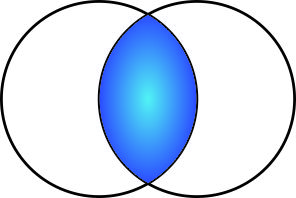
Formed by overlapping two circles, this shape creates a unique almond-like pattern, symbolizing the intersection of opposing forces.
In sacred geometry, the Vesica Piscis is regarded as a symbol of creation and duality, representing the unity of the spiritual and material worlds.
This symbol emphasizes the coexistence of contrasting energies, underlining the intricate dance of opposites within the cosmos.
The Vesica Piscis serves as a visual reminder of the interconnectedness and balance inherent in duality symbols, guiding seekers towards a holistic understanding of existence.
16. Chakana (Inca Cross)
The Chakana, also known as the Inca Cross, stands as a powerful duality symbol within Inca cosmology.
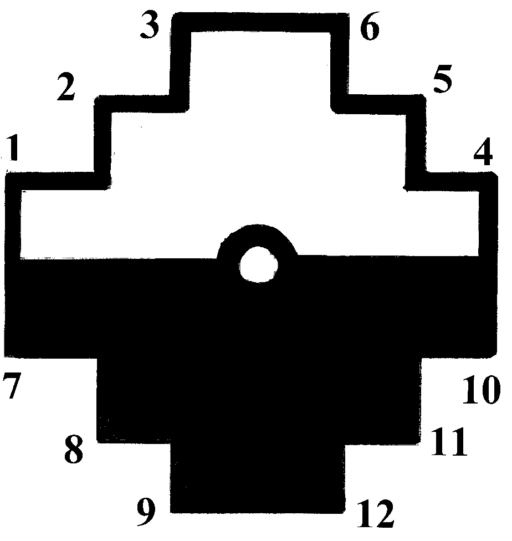
This ancient Andean symbol comprises a cross with stepped triangles extending from each arm, forming a square.
The Chakana represents the harmonious integration of dualities, such as the earthly and spiritual realms, or the sun and the moon.
Its geometric structure symbolizes balance and the interconnection of opposites. The Chakana serves as a visual guide, embodying the essence of duality symbols and encouraging a holistic understanding of the complementary forces that shape the Inca worldview.
17. Ginkgo Tree
The Gingko Tree, with its distinctive fan-shaped leaves, holds profound connections with duality symbols.
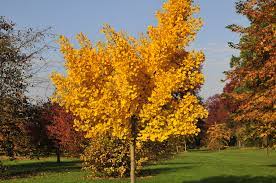
Revered in various cultures for its symbolism, the Gingko represents the harmonious coexistence of opposites.
Its dual lobes signify the unity between male and female energies, highlighting the importance of balance and interconnectedness.
The Gingko Tree serves as a living testament to the inherent dualities in nature, fostering growth and resilience despite the changing seasons.
By embodying the essence of duality symbols, the Gingko Tree becomes a visual reminder of the beauty found in embracing and celebrating the unity within diversity.
18. Zebra
The Zebra, with its distinctive black and white stripes, serves as a captivating duality symbol in the animal kingdom.
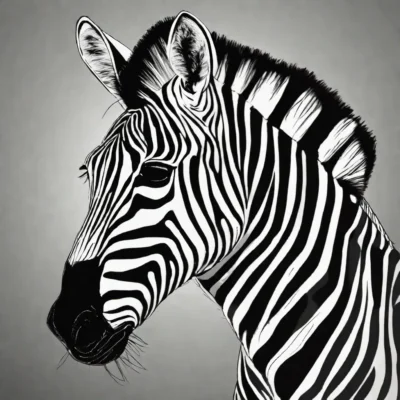
This unique coat pattern reflects the harmonious interplay of opposites, showcasing the integration of light and dark forces.
The Zebra’s appearance, often associated with balance and unity, emphasizes the interconnected nature of dualities.
In the wild, these magnificent creatures embody the essence of duality symbols, encouraging observers to appreciate the beauty arising from the coexistence of contrasting elements.
The Zebra, through its striking appearance, becomes a living representation of the intricate dance between light and dark in the natural world.
19. Sri Yantra
The Sri Yantra, a revered geometric symbol in Hinduism, intricately connects with the concept of duality symbols.
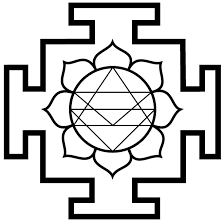
This sacred diagram consists of nine interlocking triangles radiating from a central point, symbolizing the divine union of male and female energies.
The Sri Yantra represents the harmonious convergence of opposites, emphasizing the balance and unity within dualities.
Its geometric precision mirrors the cosmic dance of Shiva and Shakti, highlighting the interwoven nature of masculine and feminine forces.
The Sri Yantra serves as a profound visual representation of duality symbols, guiding spiritual seekers towards a deeper understanding of the interconnectedness inherent in the cosmic order
20. Janus
Janus, a prominent figure in Roman mythology, is intricately connected with the concept of duality symbols.
As the god of beginnings, transitions, and doorways, Janus is often depicted with two faces, one looking to the past and the other to the future.
This dual visage symbolizes the duality of time, with Janus presiding over both beginnings and endings.
His portrayal underscores the interconnectedness of opposites and the cyclical nature of life’s transitions.
Janus serves as a potent reminder of the complexity inherent in duality symbols, prompting reflection on the fluidity of time and the constant interplay between past and future.
In Roman mythology, Janus is the god of beginnings, transitions, and duality. With two faces looking in opposite directions, he symbolizes the past and future, transitions and doorways, embodying the dual nature of time.
21. Hunab Ku
Hunab Ku, a sacred symbol among the Maya, resonates profoundly with the realm of duality symbols.
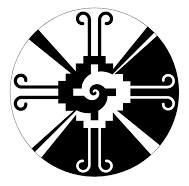
Depicting a central square with eight rays extending outward, it symbolizes the unity and interconnectedness of opposites.
The square signifies stability, while the radiating rays represent dynamic energy. Hunab Ku encapsulates the harmony within duality, illustrating the balance between stability and change.
As a revered cosmic force, it serves as a powerful reminder of the intricate dance between contrasting elements, inviting contemplation on the essential unity within the dualities that shape the Maya worldview.
22. Shiva’s Eye Shell
Shiva’s Eye Shell, also known as the “Third Eye” or “Third Eye of Shiva,” is a captivating duality symbol in Hinduism.
This sacred symbol is often associated with Lord Shiva, representing the unifying force of creation and destruction.
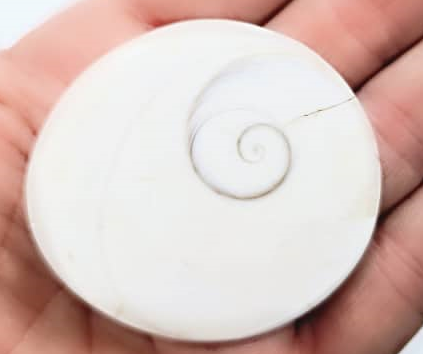
The eye symbolizes the all-seeing consciousness, transcending dualities and revealing the interconnected nature of existence.
Shiva’s Eye Shell serves as a visual metaphor for the cosmic dance between opposites, embodying the essence of duality symbols.
Its presence in Hindu iconography underscores the profound spiritual understanding that unity can be found within the dynamic interplay of contrasting forces.
23. Red Thread
The Red Thread, deeply rooted in various cultures, holds a profound connection to the realm of duality symbols.
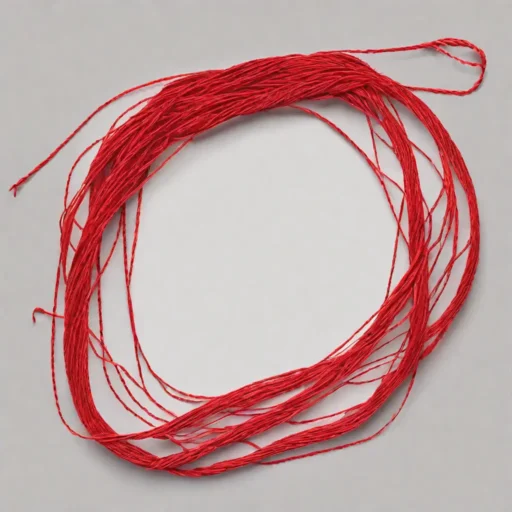
This symbolic thread is often associated with the interconnectedness of fate and destiny. In Eastern philosophies and folklore, the Red Thread signifies the invisible ties that bind people together, irrespective of time and distance.
It represents the intricate dance between predetermined paths and individual choices, highlighting the dual nature of destiny and free will.
The Red Thread serves as a poignant symbol, inviting contemplation on the delicate balance between fate and personal agency within life, embodying the essence of duality symbols.
24. Eiwaz Rune
The Eiwaz Rune, a symbol in runic alphabets, intricately uses duality symbols. Representing the yew tree, this rune embodies both life and death, renewal and transformation.
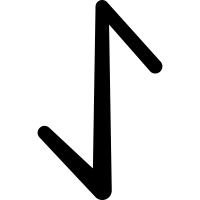
Its dual nature captures the essence of the cyclical journey, emphasizing the interconnectedness of beginnings and endings.
The Eiwaz Rune serves as a guide, reminding us that growth and change are inherent aspects of existence.
As a symbol of balance and harmony, it encapsulates the dynamic interplay of opposites within the runic traditions, enriching the understanding of duality symbols in spiritual symbolism.
25. Dingo
The Dingo, an indigenous symbol of Australia, possesses a profound connection with the world of duality symbols.
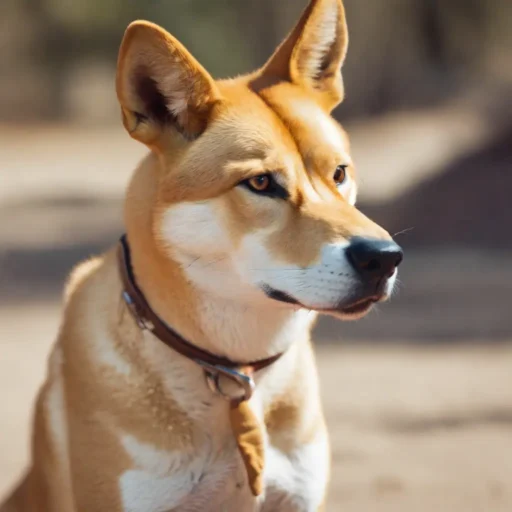
Revered in Aboriginal culture, the Dingo represents the delicate balance between the wild and the domestic, freedom and constraint.
As a totemic animal, it embodies the interconnectedness of opposing forces. The Dingo’s dual nature serves as a reminder of the intricate dance between the untamed wilderness and the symbiotic relationship with humanity.
In the rich fabric of Aboriginal symbolism, the Dingo stands as a living representation of the harmonious coexistence inherent in duality symbols.
26. Satkona
Satkona, also known as the hexagram or six-pointed star, is a potent duality symbol deeply rooted in various spiritual traditions.
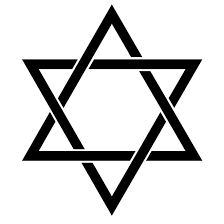
Often recognized as the Star of David, it signifies the harmonious union of opposites, with the upward-pointing triangle representing the masculine and the downward-pointing triangle symbolizing the feminine.
This geometric symbol encapsulates the equilibrium of dualities, emphasizing the unity within diversity.
Satkona serves as a visual reminder of the interconnected dance between contrasting forces, embodying the essence of duality symbols across different cultural contexts.
27. The Cross
The Cross, a universally recognized symbol, holds deep connections with the realm of duality symbols.

Its vertical and horizontal arms represent the intersection of dual forces—spiritual and earthly, life and death.
As a symbol of Christianity, it embodies the dual nature of Jesus Christ’s sacrifice and resurrection. Beyond religious contexts, the Cross serves as a potent symbol of balance, unity, and the interconnected dance between opposing energies.
The simplicity of the Cross encompasses the profound essence of duality symbols, resonating across cultures and spiritual traditions.
28. Eagle’s Tail Feather
The Eagle’s Tail Feather, revered in various indigenous cultures, referred as duality symbols.
Symbolizing the connection between the earthly and the spiritual realms, the eagle soars to great heights yet remains grounded.
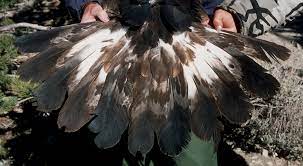
Its tail feather represents the harmonious balance between the material and the divine. As a duality symbol, the Eagle’s Tail Feather embodies the unity within opposites, showcasing the bird’s ability to navigate both earthly landscapes and celestial heights.
This sacred feather serves as a reminder of the interconnected dance between the physical and the metaphysical, echoing the essence of duality symbols in indigenous wisdom.
29. Door
The Door, a universal metaphor, bears a profound connection with duality symbols. As a threshold between spaces, it represents the liminal space between two realities – an entry or exit point.
The duality lies in the transition between what is known and unknown, exterior and interior. The act of opening or closing a door signifies choices, opportunities, and the constant flow of life.
The Door encapsulates the duality of presence and absence, providing a symbolic gateway to transformation, underscoring the intricate dance between opposing forces within the architectural symbolism of duality.
30. Bear
The Bear, revered in various cultures, stands as a potent duality symbol, embodying both strength and introspection.
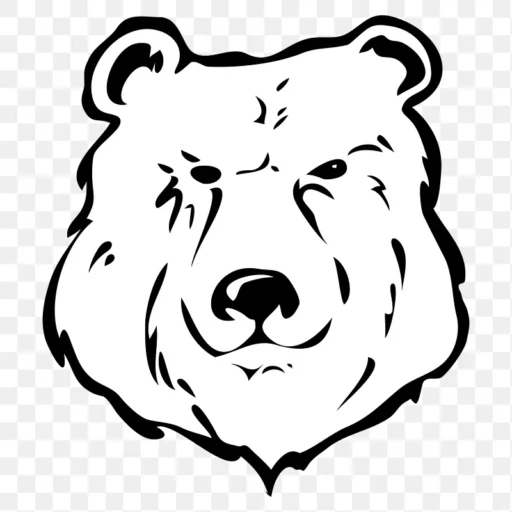
In indigenous traditions, the bear is often associated with the interplay of opposites—hibernating in winter and awakening in spring, symbolizing the cycles of rest and activity.
This dual nature signifies the harmonious balance between action and reflection.
The Bear, as a totemic symbol, invites contemplation on the intricate dance of opposites, becoming a living representation of the interconnected forces encapsulated in the broader realm of duality symbols.
31. Blue Heron
The Blue Heron, revered in various spiritual traditions, holds a profound connection with duality symbols.

As a bird that dwells both on land and in water, it symbolizes the delicate balance between the material and spiritual worlds.
The heron’s calm and patient demeanor embodies the dual nature of stillness and movement, emphasizing the interconnectedness between opposites.
In Native American traditions, the Blue Heron is considered a symbol of self-reflection and introspection, encouraging individuals to navigate the ebb and flow of life’s dualities.
As a totemic symbol, the Blue Heron guides us to find harmony within the intricate tapestry of duality symbols
How to use Symbols of Duality?
Decorating Spaces
Incorporate symbols of duality into your daily environment by decorating your living or working spaces. Choose artwork, sculptures, or decorative items featuring these symbols to create a visually enriching and meaningful atmosphere.
Mindful Reflection
Utilize duality symbols during mindfulness exercises or meditation. Focus on the symbolism to enhance your introspective practices, promoting a deeper connection with the principles of balance and unity represented by these symbols.
Decision-Making Guide
Apply the lessons of duality symbols in your decision-making process. Consider the opposing forces represented by these symbols to find a balanced perspective and make choices that align with the harmonious principles they embody.
Wearable Reminders
Incorporate duality symbols into your daily wardrobe by wearing jewelry or accessories adorned with these meaningful representations. Carry the symbolism with you as a constant and tangible reminder of unity in diversity.
By integrating these practices into your daily life, you can infuse a sense of mindfulness, balance, and connection with the profound meanings encapsulated in symbols of duality.
Final Thoughts about Duality Symbols
The duality symbols in various cultures and traditions encapsulates the profound interconnectedness of opposing forces.
From ancient symbols like the yin-yang, Ankh, and Ouroboros to the diverse representations found in nature, such as the Zebra or Blue Heron, these symbols serve as timeless reminders of the inherent balance and unity within dualities.
Whether manifested in geometric shapes, animals, or cultural metaphors, duality symbols guide us to embrace the complexity of existence.
As we contemplate these diverse symbols, we discover a universal truth: that in the dance of opposites, there lies a harmonious rhythm guiding us toward a deeper understanding of the intricate interplay between light and dark, creation and destruction, and the perpetual cycle of life.
Frequently Asked Questions (FAQs)
What animal is associated with duality?
The snake is often associated with duality due to its ability to shed its skin, symbolizing transformation and renewal. In various cultures, it represents the balance between life and death.
What is the symbol that represents two sides?
The Yin and Yang symbol is a prominent representation of two sides. It illustrates the interconnectedness of opposites, such as light and dark, in Chinese philosophy.
What is the spiritual meaning of duality?
In spirituality, duality signifies the recognition and acceptance of opposing forces or energies. It emphasizes finding balance and harmony between contrasting elements for personal growth and enlightenment.
What is the Celtic symbol for duality?
The Celtic Knot, with its endless loops and interwoven patterns, is a common symbol for duality in Celtic culture. It reflects the cyclical nature of life and the interconnectedness of opposites.
What is the symbol of fate?
The Moirai, also known as the Fates in Greek mythology, are often depicted as three sisters controlling human destiny. Their symbols include a thread, representing life, and shears, symbolizing the cutting of the thread.
What is the trinity symbol called?
The triquetra, also known as the Trinity Knot, is a symbol featuring three interlocked loops. It represents various trinities, including Father, Son, and Holy Spirit in Christianity, symbolizing unity in diversity.
